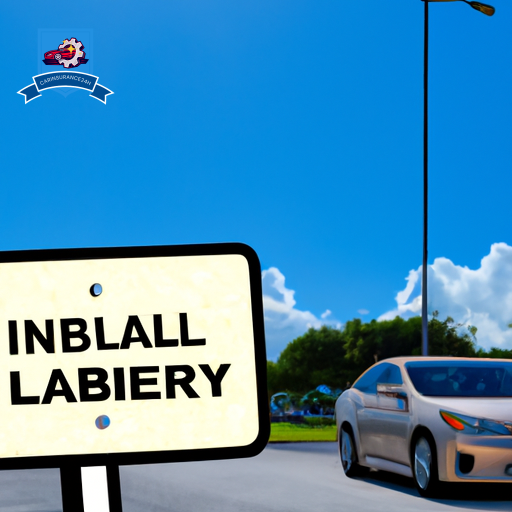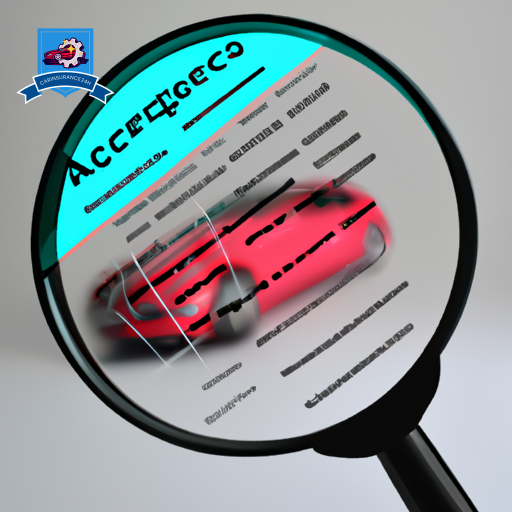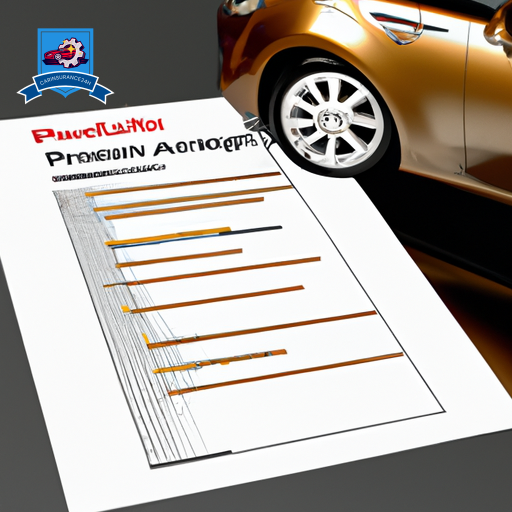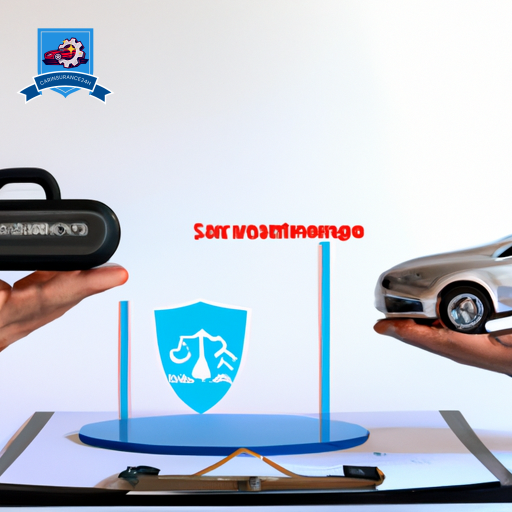In the domain of automotive leasing, the question of whether one can secure liability insurance alone on a leased vehicle presents a nuanced challenge. Liability insurance, while fulfilling legal obligations, may not meet the thorough coverage mandates stipulated by leasing agreements. These contracts often require more than the minimum insurance standards, aiming to protect the lessor’s investment in the vehicle.
This dissonance between legal requirements and leasing conditions raises important considerations for lessees regarding financial liabilities and obligations. As we explore the intricate balance between adhering to legal standards and satisfying leasing company policies, one must carefully assess the implications of their insurance choices on their financial and legal standing.
Understanding Liability Insurance

Liability insurance, a fundamental aspect of automotive coverage, serves as a critical safeguard for drivers by providing protection against financial losses arising from accidents deemed to be their fault. This insurance type is pivotal, especially for leased vehicles, as it not only fulfills legal requirements but also contractual obligations with the leasing company. Liability insurance covers costs associated with damage to property and bodily injury to others involved in the accident. Given its importance, understanding the intricacies of policy discounts and the claim process is paramount for lessees.
Policy discounts play a substantial role in reducing the financial burden of liability insurance. Insurers often offer discounts for a variety of reasons, including, but not limited to, a clean driving record, multiple policies with the same company, and the installation of safety features in the vehicle. Lessees should actively inquire about these discounts to optimize their insurance expenses without compromising on the coverage quality.
The claim process is another critical aspect of liability insurance. In the event of an accident, prompt communication with the insurance provider is essential. The process typically involves reporting the incident, providing detailed information about the accident, and possibly submitting photographs of the damage. The insurer then evaluates the claim, which may include an assessment by a claims adjuster, to determine the compensation amount. Understanding this process can greatly streamline the experience of handling post-accident procedures, ensuring that lessees are adequately prepared to handle potential incidents efficiently and effectively.
Leasing Agreements Explained

Leasing agreements form the foundation of any car leasing transaction, setting forth the obligations and rights of both the lessee and the lessor. A thorough understanding of leasing contracts, detailed requirements, and common leasing terms is pivotal for ensuring compliance and making informed decisions.
This section aims to elucidate these aspects, providing clarity on the intricacies involved in leasing agreements.
Understanding Leasing Contracts
Understanding the complexities of leasing contracts requires a thorough grasp of the terms and conditions outlined within these agreements.
Central to these contracts are provisions regarding lease termination and the possibility of an early buyout, which are critical for lessees to grasp. Lease termination clauses specify the conditions under which a lessee or lessor may end the lease prior to the agreed-upon conclusion, often including penalties or fees for early termination.
Conversely, early buyout options allow the lessee to purchase the leased vehicle before the lease term ends, typically at a price determined at the lease’s inception. These components are pivotal in shaping the financial and legal responsibilities of both parties, necessitating a careful review by prospective lessees to verify alignment with their personal and financial goals.
Leasing Requirements Detailed
Having examined the intricacies of leasing contracts, it is imperative to explore the specific leasing requirements that lessees must fulfill under these agreements. These stipulations guarantee that both parties have a clear understanding of their responsibilities and the conditions under which the lease operates. They typically include, but are not limited to:
-
Thorough and Collision Insurance Coverage: Lessees are required to carry insurance that exceeds the minimum liability to protect the lessor’s asset.
-
Early Termination Fees: A detailed clause that outlines the financial implications should the lessee decide to conclude the lease prematurely.
-
Lease Transferability: Conditions under which the lessee can transfer the lease to another party, including any restrictions and required procedures.
These elements are important for maintaining transparency and protecting the interests of all parties involved in the leasing agreement.
Common Leasing Terms
To navigate the complex landscape of leasing agreements, it is important to familiarize oneself with the commonly used terms and their implications. Central to these agreements are ‘lease duration’ and ‘termination fees,’ which dictate the length of the lease and the penalties for early contract termination, respectively.
The lease duration establishes the period during which the lessee is authorized to use the vehicle, typically ranging from two to four years. Concurrently, termination fees are predetermined charges that the lessee must pay should they decide to end the lease prematurely.
Understanding these terms is essential, as they greatly influence the financial responsibilities and commitments entailed in leasing a vehicle. A thorough comprehension ensures informed decision-making and effective management of potential financial risks.
Insurance Requirements for Leased Cars

Leasing a car necessitates meeting specific insurance requirements that often exceed the minimum coverages mandated for owned vehicles. These requirements are put in place to protect the leasing company’s investment in the vehicle, making sure that it is adequately covered in case of damage or loss. Unlike purchasing a vehicle, where the owner may opt for the minimum liability coverage required by state law, leasing companies typically require additional coverages to safeguard their interests and the lessee’s financial responsibilities.
The insurance requirements for leased cars can be detailed and vary by leasing company, but generally include the following key components:
-
Thorough and Collision Coverage: This makes sure that the car is protected against theft, vandalism, and accidents, regardless of who is at fault. These coverages come with deductibles, which are the amounts you pay out of pocket before your insurance policy kicks in.
-
Higher Liability Limits: Leasing companies often require higher liability coverage limits than the state minimum to cover potential damages to other vehicles, property, or individuals in the event of an accident for which the lessee is at fault.
-
Gap Coverage: This is particularly significant in leasing arrangements. Given the rapid depreciation of new vehicles, there’s often a gap between what an insurance company will pay for a totaled or stolen car and the remaining balance owed on the lease. Gap coverage, or Guaranteed Asset Protection, covers this difference. Remarkably, leasing companies might conduct a credit check to determine the lessee’s eligibility for this coverage, reflecting the financial risk they perceive.
Meeting these insurance requirements is essential for leasing a car, as failing to do so can result in financial penalties or even termination of the lease agreement.
Comparing Coverage Types

Understanding the spectrum of coverage types available for leased cars is essential for lessees aiming to make informed insurance decisions.
This segment will explore the distinctions between mandatory and optional insurance policies, alongside an evaluation of risk levels associated with different coverage options.
Such an analysis is vital for lessees to align their insurance choices with their personal risk tolerance and leasing agreement requirements.
Coverage Types Overview
Exploring the various coverage types is essential for lessees to guarantee adequate protection of their leased vehicles. Understanding the intricacies of each coverage option enables informed decisions that balance coverage costs with policy benefits.
-
Liability Insurance: This coverage is fundamental, addressing the lessee’s legal responsibility for bodily injuries or property damage to others. It does not cover the leased vehicle itself.
-
Collision Insurance: This pays for damage to the leased vehicle in the event of an accident with another vehicle or object, regardless of fault.
-
Inclusive Insurance: This provides coverage for a range of non-collision incidents, including theft, vandalism, and natural disasters, ensuring broader protection beyond accidents alone.
Choosing the right combination of these coverages will depend on individual risk assessments and leasing agreement requirements.
Mandatory Vs Optional Insurance
Having examined the various coverage options, it is important to differentiate between mandatory and optional insurance policies for leased vehicles, to guarantee lessees are both legally compliant and sufficiently protected.
| Mandatory Insurance | Optional Insurance |
|---|---|
| Liability Insurance | Collision Coverage |
| Extensive Coverage | Gap Insurance |
| Personal Injury Protection (PIP) | Roadside Assistance |
Mandatory insurance encompasses the minimum requirements to make sure that all parties are covered in the event of an accident, focusing on liability, extensive coverage, and personal injury protection. Optional insurance policies, while not required by law, offer additional protection and peace of mind. Lessees should consider policy discounts and the claim process when selecting these coverages, to optimize their protection and financial investment in a leased vehicle.
Assessing Risk Levels
To effectively mitigate financial risks associated with leased vehicles, one must meticulously compare the coverage types offered by various insurance policies. This comparison reveals the varying degrees of protection against unforeseen events, thereby influencing an individual’s risk exposure.
-
Thorough Coverage: Essential for protection against natural disasters, theft, and vandalism. Without this, lessees could face substantial out-of-pocket expenses to repair or replace a vehicle affected by unforeseen circumstances.
-
Crash Coverage: Addresses damages from accidents, irrespective of fault. This safeguards lessees from significant financial losses during collisions.
-
Responsibility Insurance: While it covers damages to others’ property or injuries, it does not protect the leased vehicle or personal assets, leaving a gap in coverage that might expose lessees to financial vulnerabilities in case of serious accidents.
Minimum Insurance Standards

Minimum insurance standards for leased cars are legally mandated to protect both the lessee and the lessor against potential financial losses. These standards are vital in ensuring that adequate coverage is in place to cover the costs of damages or liability in the event of an accident. The specifics of these requirements can vary greatly depending on state regulations, which meticulously outline the minimum policy limits for bodily injury and property damage liability. Understanding these legal mandates is essential for lessees to guarantee compliance and safeguard against potential legal and financial repercussions.
State regulations serve as the foundation for these minimum insurance standards, dictating the lowest acceptable coverage amounts for leased vehicles. These policy limits are designed to provide a baseline of protection, addressing the liability exposure of both parties involved in the leasing agreement. It is important to note that while these minimums are legally required, they may not fully encompass the financial risks associated with a leased vehicle. Lessees are often encouraged to contemplate higher coverage limits to provide a more thorough safety net.
Moreover, leasing companies typically have their own requirements that may exceed state-mandated minimums. These stipulations are put in place to further mitigate the financial risks associated with high-value vehicles. Compliance with both state regulations and leasing company requirements is non-negotiable for lessees wishing to maintain their leasing agreements in good standing. Understanding and adhering to these minimum insurance standards is a foundational aspect of leasing a vehicle, ensuring the protection of all parties involved from potential financial liabilities.
Financial Implications

Understanding the financial implications of leasing a car is essential, as it encompasses both the direct and indirect costs associated with insurance coverage beyond the minimum requirements. Opting only for liability insurance on a leased vehicle may initially seem like a cost-saving strategy. However, lessees must consider the broader financial context, including down payment implications and the potential impact on trade-in value.
-
Down Payment Implications:
- Leasing agreements often require a substantial down payment, which can be affected by the lessee’s choice of insurance coverage. Opting for liability insurance only may not reduce the down payment significantly, as lessors usually mandate basic and collision coverage to protect their asset. As a result, the expected financial relief from choosing minimal insurance coverage might not materialize as anticipated.
-
Monthly Premiums vs. Total Lease Cost:
- While monthly premiums for liability-only insurance may be lower, this must be weighed against the total cost of the lease agreement. Lessees should calculate the aggregate expense of the lease, including insurance, to assess the financial feasibility. Minimal savings on premiums may not justify the potential risk exposure.
-
Trade-In Value Considerations:
- At the lease’s conclusion, vehicles with only liability coverage may have experienced greater depreciation or unrepaired damage, affecting their trade-in value. This can result in higher end-of-lease costs for the lessee or penalties for excessive wear and tear, ultimately impacting the overall cost-benefit analysis of the leasing decision.
Additional Coverage Options

Exploring additional coverage options for leased vehicles is important to ensuring thorough protection against unforeseen incidents. While liability insurance covers damages to other vehicles and medical costs for injuries you may cause, it does not protect the leased vehicle itself or cover the difference between what is owed on the lease and the car’s value in the event of a total loss. This is where gap insurance and careful consideration of deductible amounts become critical.
Gap insurance is designed to cover the ‘gap’ between the amount owed on a lease and the actual cash value of the vehicle at the time of an accident. Given the rapid depreciation of new cars, this coverage is particularly valuable for leased vehicles, as it can prevent significant financial shortfall if the car is totaled or stolen. Lessees should assess the terms of their lease agreement to determine the potential gap risk and consider this coverage as a means to mitigate such financial exposure.
Deductible amounts also warrant careful consideration. Choosing a higher deductible can lower premium costs, but it increases out-of-pocket expenses in the event of a claim. Conversely, a lower deductible reduces the amount you pay after an incident at the expense of higher premiums. Lessees must balance these factors based on their financial situation and risk tolerance.

After examining additional coverage options for leased vehicles, it is equally important to take into account the policies of leasing companies, which can greatly impact insurance requirements and financial responsibilities. Leasing companies often have strict policies that can influence both the type of insurance a lessee must carry and the financial implications of the lease agreement itself. Understanding these policies is essential for ensuring compliance and avoiding unexpected costs.
The policies of leasing companies can vary greatly, but there are several common areas of concern:
-
Minimum Insurance Requirements: Most leasing companies require lessees to carry more than just liability insurance. Thorough and collision coverage are typically mandated to protect the leased vehicle against physical damage. The lessee must make sure their insurance policy meets or exceeds these minimum requirements to avoid violating the lease agreement.
-
Early Termination Fees: If a lessee decides to terminate the lease early, they may be subject to significant fees. These fees can vary depending on the leasing company’s policies and the terms of the lease agreement. Understanding these potential costs is crucial for any lessee considering early termination.
-
Lease Transfer Policies: Some lessees may wish to transfer their lease to another individual. Lease transfer policies are determined by the leasing company and can include restrictions or fees. Familiarity with these policies is essential for lessees considering a lease transfer as a way to avoid early termination fees or other penalties.
Understanding the policies of leasing companies requires careful consideration and understanding of the lease agreement. Lessees must be proactive in reviewing these policies to ensure compliance and to make informed decisions regarding their leased vehicle.
Making the Right Insurance Choice

Selecting the appropriate insurance coverage for a leased car involves careful consideration of various factors, including legal requirements and personal financial protection needs. It is paramount to understand that while leasing companies mandate thorough and collision coverage in addition to liability insurance, the lessee’s responsibility does not end there. The intricacies of policy details and the spectrum of coverage costs necessitate a thorough evaluation to make sure the chosen policy aligns with both the lessee’s budgetary constraints and the lessor’s stipulations.
The evaluation of coverage costs is a critical component in making an informed insurance decision. Lessees must meticulously compare quotes from various insurers, taking into account the extent of coverage provided against the premium costs. This comparison should not only focus on the immediate financial outlay but also consider the long-term implications of each policy option, including deductibles and coverage limits.
Moreover, potential policy discounts play a significant role in the decision-making process. Many insurance companies offer discounts for multiple policies, safe driving records, and even for vehicles equipped with advanced safety features. Lessees should proactively inquire about these discounts as they can substantially reduce the overall cost of insurance.
Frequently Asked Questions
Can I Switch to Liability-Only Insurance if I’m Midway Through My Car Lease Term?
Switching to liability-only insurance mid-lease may result in lease penalties due to most agreements requiring full coverage. This change could reduce insurance premiums but risks financial liability for damages not covered by basic liability insurance.
How Does Adding a Co-Lessee Affect the Type of Insurance Coverage Required?
Adding a co-lessee can release potential insurance discounts, as 20% of lessees report reduced rates through combined policies. This adjustment necessitates revisiting required coverage types, ensuring both lessees benefit from thorough protection and cost-efficiency.
Are There Any State-Specific Exceptions That Allow for Liability-Only Insurance on Leased Vehicles?
State regulations and insurance exceptions vary, potentially allowing for liability-only insurance on leased vehicles in specific circumstances. However, it’s essential to consult with legal and insurance professionals to understand the applicability of such exceptions in your jurisdiction.
How Do Lease Extensions Impact Insurance Coverage Requirements, Particularly for Those Considering Liability-Only Insurance?
Lease extensions often necessitate a review of insurance coverage requirements, potentially leading to insurance premium adjustments. The lease renewal process may alter coverage terms, emphasizing the importance of reevaluating liability and inclusive insurance needs.
What Are the Consequences of a Major Accident While Having Liability-Only Insurance on a Leased Car, in Terms of Responsibility and Financial Obligations?
In the event of a major accident with liability-only insurance on a leased vehicle, the lessee faces significant financial responsibility for damages and losses, underscoring the importance of exploring insurance alternatives and prioritizing accident prevention strategies.
